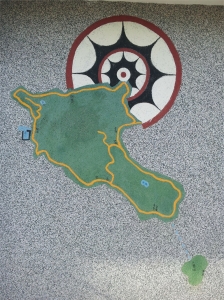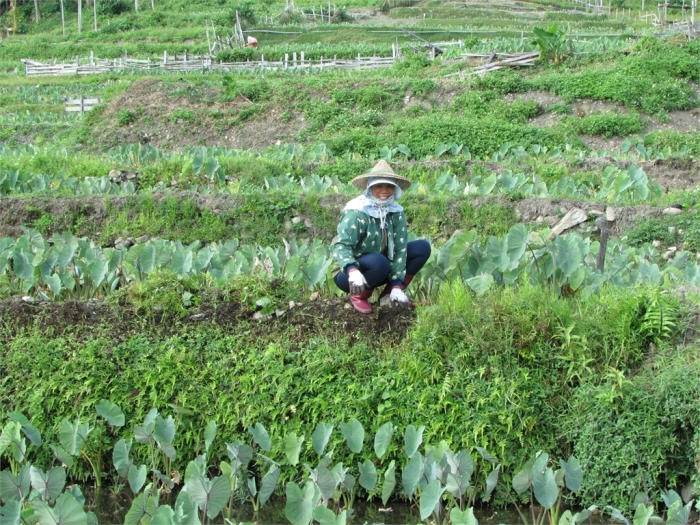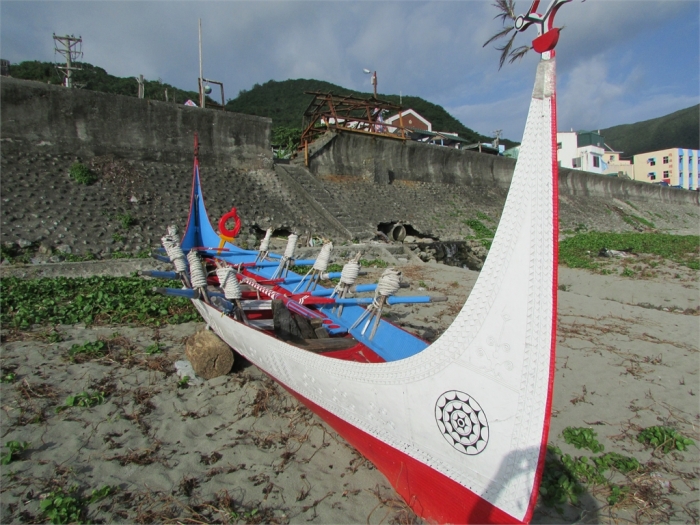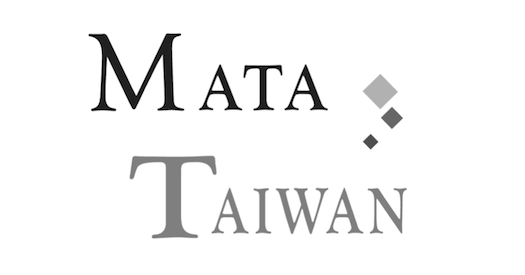[caption id="" align="aligncenter" width="300"]Ours is an island of warriors, a place where dreams gather, a way station for shoals of migrating fish, a coordinate of the rising and setting sun, and a rest stop for water and hope
 The Man with the Compound Eyes, Wu Ming-Ye[/caption]
In its ecological tale of Taiwanese nature, author Wu Ming-Ye created an untouched fictional island paradise called Wayo Wayo. Today I visited a true Taiwanese Paradise, Lanyu Island or Orchid Island.
This volcanic island with only 45 square km’s and almost 3000 people is famous for its unique fauna and for being the home of the Tao or Yami.
In winter the boat trips to the island are few and erratic so I decided to buy a ticket in Daily Air, the only air company that regularly does its trips from Taitung to Lanyu.
With my ticket reserved for 10.20 am, I woke up at 8 am and was once again surprised by the friendliness of the hostel owners. Not wanting me to pay the 350 taxi fee to the airport, they drove me there in their car for 200 and even bought me breakfast!
I’ll always remember the way they were so hospitable towards me.
The Man with the Compound Eyes, Wu Ming-Ye[/caption]
In its ecological tale of Taiwanese nature, author Wu Ming-Ye created an untouched fictional island paradise called Wayo Wayo. Today I visited a true Taiwanese Paradise, Lanyu Island or Orchid Island.
This volcanic island with only 45 square km’s and almost 3000 people is famous for its unique fauna and for being the home of the Tao or Yami.
In winter the boat trips to the island are few and erratic so I decided to buy a ticket in Daily Air, the only air company that regularly does its trips from Taitung to Lanyu.
With my ticket reserved for 10.20 am, I woke up at 8 am and was once again surprised by the friendliness of the hostel owners. Not wanting me to pay the 350 taxi fee to the airport, they drove me there in their car for 200 and even bought me breakfast!
I’ll always remember the way they were so hospitable towards me.



Akoike! Welcome to the Paradise!
Shamam is from the Tao and Yami people, and later told me how curious their naming system is. When a man isn’t married and hasn’t kids a man gets different names from when he isn’t married, he hasn’t kids, for when he achieved all that and when he is an elder. Therefore he passed from Shimota, to Shimivilan to Shamam lamuran, with Shamam meaning “the father of our people”. He tells me he studied in Taiwan with a degree in Geography, his English is some of the best I’ve encountered and is knowledge of Tao culture is astonishing. We get into is much worn out van, which hilariously plays a Christmas song every time he does a reverse, and we drive to his village, Iratan.There’s six villages in Lanyu, all of them with different accents, Shamam tells me!A man gets different names from when he isn’t married, he doesn’t have any kid, to when he achieved all that and when he is an elder……



Tao, the Most Unique Indigenous People in Taiwan
Due to is location Lanyu is prone to suffer strong storms or typhoons, which lead the Tao to create the Fa’ai a below ground home that can resist anything the southeast Asian weather throws at them. “During the typhoon last year, the only gas station and the school in this area got completely destroyed while this house you see was intact,” he tells me while we crouch in the house small wooden rooms. We then stepped into the close Lanyu Flying Fish museum, where I get more detailed info about this unique culture. The Tao differs a lot from the aboriginal tribes from Taiwan due to their isolation. Instead of revolving around hunting, war and the mountains their culture revolves around the ocean and fishing.Instead of revolving around hunting, war and the mountains their culture revolves around the ocean and fishing……






Animals, Rocks, Tao Boats, and the Nuclear Wastes
The locals call the multiple goats who roam around the island “traffic lights” since they always have to stop when they cross the streets, and it really is impressive how many they are, climbing cliffs, houses, and scooters. The populations of cats, dogs and black pigs are also considerable, exceeding the human population largely I believe. I marvelled at all the huge volcanic rocks with shape inspired names and interesting stories. There is the Red Head rock with his lighthouse in the top, the Kokotai or crocodile rock, the Mantou or Dumpling rock, the Helmet rock and the Couple rock which got its name for resembling a couple arguing while the young son tries to separate them. My favourite was the Two Lions Rock, which resemble a male and female lion and was used in the old times as a discussion ground to discuss issues between villages. They would just step in front, each tribe in front of a different lion and argue.All I could think while passing this desolate place is how can someone look at a place like Lanyu and think it would be a perfect place to dump nuclear waste?
















Owls, Nuclear Wastes, or Modernization, Who is the Real Anito?
During a quiet walk on the seaside all I could see were friendly villagers talking and drinking, while kids and small dogs played around. Traditional platforms, in the old days used by Tao women waiting for their husbands to arrive from a day in sea fishing, were now used to have a nap while enjoying the sea breeze. Now the women still work in the small Taro and sweet potato fields while their husbands play cards and go to the convenience store. A lot has changed I thought while resting near a beautiful Tatal and watching the sunset. Luckily not too much. Believing the world was filled with Anito (evil spirits) the Tao fill all their Tatalas and houses with the sun symbol, which scares them away. They even place them on their churches, providing maybe they’re not too confident the Christian god will be very efficient at doing the same. Maybe I was contaminated by the laid back atmosphere since I end up sleeping in a hanging net with a local cat in my lap. When I woke up at 7 I discovered that all restaurants were already closed. Life really is laid-back around here. Shamam was nice enough to drive me around in order to find a place where I could have some traditional Lanyu food. After much looking we found a restaurant in a different village that served me a tasty meal of goat meet with Taro leaves. After that we headed to the nearby forest for some nocturnal searching. Shamam introduced me to a lot of unique island beetles and trees, including the so called Ghost Tree, which only blooms its delicate blue flowers during the night. However the biggest prize is to be able to see the elusive Lanyu small owl, or Tuturu as they call it. While to the Taroko the sight of an owl is a symbol of good news, precisely that the person will have a male son, to the Tao owls are symbols of bad luck and possible ghosts. Luck or not we could only hear their distant singing. I guess I just won’t have a son. When we returned to the homestay, I met Shamam’s mother who presented me with some amazing photo books of old pictures of Lanyu while is 70-year-old mom.here we don’t show our culture for tourists like other aboriginals. We just live our lives peacefully and they end up coming.


For more interesting indigenous stories? Follow us now on our page!
Photos via Nelson Moura]]>
